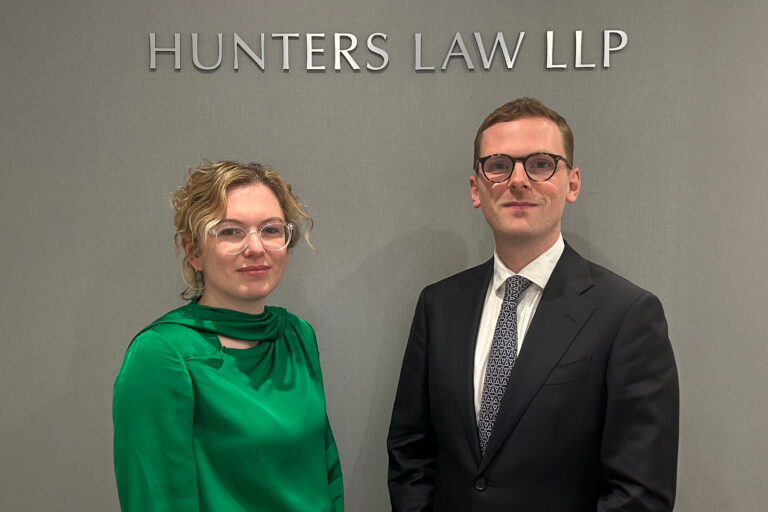Richard Kershaw discusses how the courts will apportion assets of a divorcing couple in the FTAdviser

This article was originally published in the FTAdviser and can be accessed here.
How the courts will apportion assets of a divorcing couple
How the court should share a married couple’s assets on divorce is a topic which generates heated debate. A recent High Court judgment (CB v KB [2019] EWFC 78) has put under the microscope the issue of whether the weaker financial party should have to exhaust her capital award to meet her income needs.
The law is guided by the principle that the court should not discriminate between the breadwinner and the homemaker. This principle was established by the House of Lords (in its judicial capacity) in 2000 in the seminal case of White v White [2000] UKHL 54.
However, there remains scope to debate how this principle should be implemented, and whilst the court’s broad approach is now clear, some issues remain on which there is a diversity of judicial opinion. One such issue is whether a wife should have to use her share of the family’s capital assets to meet her income needs, or whether her husband should pay maintenance to cover these costs.
As it is often the wife in the weaker financial situation, I assume that is the case for the purposes of this article. However, the same principles would apply if the position were reversed, for same-sex married couples, and for same-sex and opposite-sex civil partners.
The court’s first step is always to ascertain what the parties’ assets are. The court must then consider which assets are “matrimonial”. Matrimonial assets are those which reflect the parties’ endeavours during the marriage. This would typically exclude inherited or gifted assets, or those accrued before or after the marriage (“marriage” in this context includes pre-marital cohabitation which transitions seamlessly into marriage). The family home is almost always considered a matrimonial asset.
Once the court has determined which assets are matrimonial, the starting point is that matrimonial assets are shared equally, with each party retaining their non-matrimonial assets.
This can be departed from in certain circumstances, the most common being “need”. If the division would not enable one party to meet their needs, e.g. for a home, whilst the other would have assets surplus to their needs, the court can divide matrimonial property unequally, or invade one party’s non-matrimonial property.
Other circumstances where the general approach may be departed from include where the parties have signed a pre-nuptial or post-nuptial agreement, to reflect that one party will receive riskier assets, or, very rarely, where justified by one party’s conduct.
Once the court has determined the appropriate division of the parties’ capital, it must consider whether one party should pay ongoing maintenance to the other, and if so for how long.
Whether a court will order maintenance is based on the wife’s need and the husband’s ability to pay. The Court of Appeal confirmed in Waggott v Waggott [2018] EWCA Civ 727 that a wife has no right to “share” her husband’s earnings after divorce in the same way that capital assets are shared.
When considering the parties’ future income needs, their standard of living during the marriage will be a factor the court takes into account and will have more weight after a long marriage.
Whilst the court expects a divorcing wife to maximise her earning capacity, in many cases this will not enable the wife to earn sufficient income to meet her needs. Reasons for this could include that she will remain the primary carer for young children, that she is approaching retirement age, or that choices made during the marriage mean she lacks the skills and experience to develop a significant earning capacity.
The reality is that after a long marriage with a comfortable standard of living, many wives will be unable to meet their future income needs from earned income. If the husband’s financial position permits, the court can order that he pay maintenance amounting to the shortfall between the wife’s income and her needs.
If the wife has surplus capital, beyond that which is needed for housing, then any income it produces should be put towards meeting her needs. A more difficult question is whether the wife should be expected to exhaust the capital to meet her income needs over her lifetime, i.e. to “amortise” it, or whether she should be entitled to preserve her capital and receive maintenance from her husband.
Lord Justice Moylan in Waggott phrased the question as: “to what extent is it fair for the wife to be required to use her sharing award to meet her income needs when the husband will meet his needs from earned income?”.
Judges have taken different approaches to this question. Most have suggested flexibility is key, but a recent decision suggests a stricter approach.
In a Court of Appeal case decided shortly after White, Lambert v Lambert [2002] EWCA Civ 1685, it was indicated that it would be unfair to require the wife to spend her capital on meeting her income needs where the husband would not be doing so. Lord Justice Thorpe said he could see “no possible reason” why only the wife should have to spend her capital on costs of living, and Mr Justice Bodey expressed the view that for the wife to have to spend her capital on living costs, when the husband would not have to, did not seem fair after a long marriage.
Several years later, in Vaughan v Vaughan [2010] EWCA Civ 349, the court of Appeal set out a flexible approach. Lord Justice Wilson stated “it is impossible to be categorical about what the law expects in this area”, and went on to note that for a couple approaching retirement, who may have accumulated significant capital through savings from income, the distinction between capital and income is likely to be treated by the court as more fluid.
The Court of Appeal considered the issue again in 2018 in Waggott. The wife was in her late 40s and had given up work early in the 20 year marriage to support the husband’s career. The wife’s total assets following the capital division were £9.76m. The trial judge had ordered the husband to pay maintenance equal to the wife’s income needs of £175,000 per annum for life.
On appeal, the husband successfully argued that the wife should have to use some of her sharing award to meet her ongoing needs. The Court of Appeal accepted that it would be reasonable for the wife to amortise around 10% of her sharing award, whilst reiterating that a flexible approach to this question is necessary.
In 2019, there were two conflicting High Court decisions.
O’Dwyer v O’Dwyer [2019] EWHC 1838 concerned a marriage of almost thirty years which had produced four children; the parties were now in their early 60s. The sharing of the parties’ assets left the wife with £3m; after meeting housing and other costs she would have around £1.7m. The husband would continue to earn a substantial income for a few years.
In line with Vaughan and Waggott, Mr Justice Francis set out that “Whether or not a spouse should be required to amortise their capital will be case specific”. In this case, he concluded that it would be fair for the wife not to have to amortise her capital for the remaining years of the husband’s employment; thereafter she would need to do so.
In CB v KB [2019] EWFC 78, Mr Justice Mostyn took a different approach. This was a marriage of almost 20 years (including pre-marital cohabitation); the husband was 41 and the wife 45. The parties had six children and the wife had not worked during the marriage. The husband was a member of a successful band and it was anticipated that he would continue to earn a high income. The wife’s share of the matrimonial assets was around £5m.
In stark contrast to the flexible approach, Mr Justice Mostyn said “I struggle to conceive of any case where in the assessment of a [wife’s] needs it could tenably be argued that it was reasonable for her not to have to spend her own money in meeting them. After all, that is what money is for”. After meeting housing and other costs, the wife would have around £2.1m in capital, and Mr Justice Mostyn’s order assumed she would amortise all of this to meet her income needs.
The flexible approach can be criticised for creating uncertainty, which makes it more difficult for disputes to be settled through negotiated agreement. However, Mr Justice Mostyn’s approach in CB v KB is also problematic. His assertion that spending “is what money is for” does not reflect the reality of the wealthy couples considered in these cases, who do not live hand-to-mouth, for whom capital represents financial security and the ability to assist future generations. It ignores the different roles most people accord to capital and income. It would also appear inconsistent with Court of Appeal authority.
Further it is questionable whether Mr Justice Mostyn’s approach avoids the discrimination described in White, between homemaker and breadwinner. The approach in White was explained by reference to society’s increasing awareness that a breadwinner’s success may have been made possible, or enhanced, by the homemaker’s non-financial contributions to the family, and to society’s increasing recognition that the homemaker will often have made these contributions at the cost of losing the opportunity to develop her own earning capacity.
If, following divorce, a wife has to use her share of the matrimonial assets to meet her income needs, but the husband’s share continues to grow as he meets his income needs through the earning capacity he developed, supported by the wife, during the marriage, then it would not seem that the discrimination with which White was concerned has been avoided. On the other hand, it has been clearly established that a wife has no right to share in her former husband’s earning capacity.
Articulating a fair approach to the division of assets on divorce which avoids discrimination will continue to challenge the family court. The question of amortisation of matrimonial assets is a tricky aspect of that question, and it remains to be seen whether the judgment in CB v KB is indicative of a new judicial attitude, or if the flexible approach will continue to prevail.





